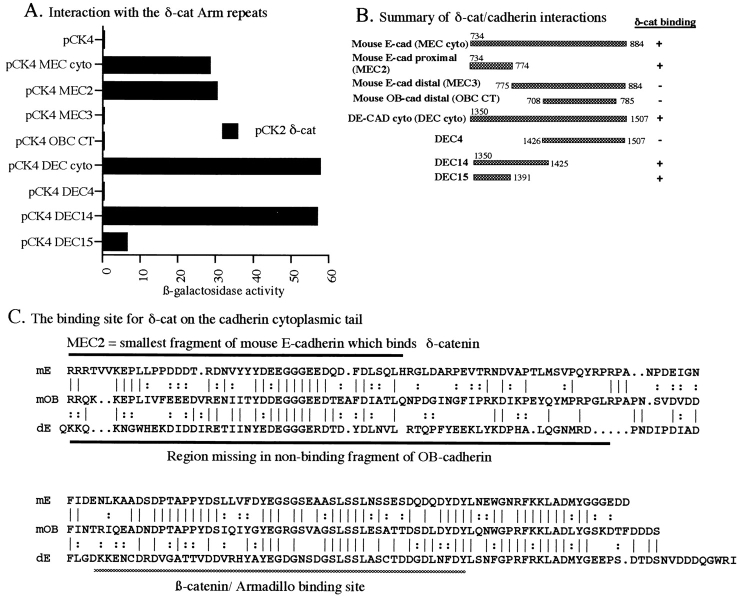Figure 7.
δ-catenin interacts directly with the juxtamembrane region of cadherins in the yeast two-hybrid system. (A) Interaction of δ-catenin with various cadherin fragments. The Arm repeat region of human δ-catenin in the pCK2 “bait” vector was tested against pCK4 vector alone or with pCK4 fusions encoding the full-length murine E-cadherin cytoplasmic domain (pCK4 ME-CAD cyto), two complementary fragments of murine E-cadherin carrying either the membrane-proximal region (pCK4 MEC2) or the distal region with the β-catenin binding site (pCK4 MEC3), a COOH-terminal fragment of OB-cadherin not containing the juxtamembrane region (pCK4 OB-CAD CT), the entire cytoplasmic domain of Drosophila E-cadherin (pCK4 DEC), and smaller fragments of Drosophila E-cadherin as shown in B (pCK4 DEC 4, 14, and 15). (B) Schematic summary of the cadherin fragments and their interaction with δ-catenin. (C) Sequence alignment of the cytoplasmic tails of mouse E-cadherin, mouse OB-cadherin, and Drosophila DE-cadherin. Above the sequences are shown the smallest fragment of mouse E-cadherin which bound δ-catenin in the yeast two-hybrid assay, while below are diagrammed the amino acids missing from the OB-cadherin clone which does not bind to δ-catenin. The β-catenin/Armadillo binding site is also indicated.

